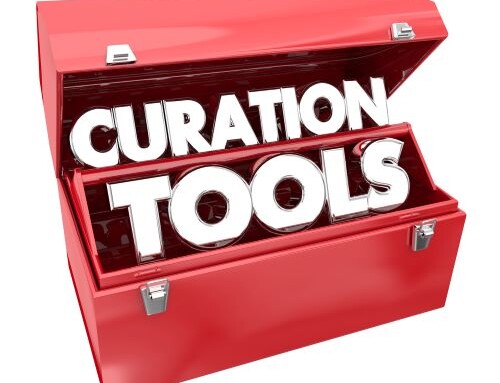Most senior executives look at the speed at which results can be obtained. While organizations consider the costs and the containment of costs essential, time to productivity has historically been the most critical element. This crucial element is why productivity (how much work an employee can perform in a specific time) has been quantified mainly in minutes, hours, days, months, and years and translated into impact on company growth.
Not all employees, even those in the same roles and assigned responsibilities, will perform at the same performance levels. There will always be workers who excel, workers who don’t, and a larger group who form the minimum acceptable productivity measure used for all employees.
However, time alone doesn’t tell the entire picture about employee impact on company success. It can be difficult, for example, to quantify three different employees based merely on time and productivity. Employee A may appear to be doing a superior job but utilizes support others do not. Employee B may appear competent while creating additional work for peers or other departments. And finally, Employee C may be challenged more than the average worker due to workplace culture.
As noted, time alone doesn’t reflect employee performance issues that are due to workplace culture such as hiring practices, training/education, morale, workload balance, team dynamics, accuracy, etc. (See model below.)
| Organization Perception | Ideal Worker | Metrics that Time Alone Doesn’t Track |
| An employee is more efficient. | The employee can take on additional tasks on any given day. Employee excels at organization and time management, can adapt to changes quickly, is highly agile, and can remain focused despite distractions. |
|
| An employee is better educated, trained, or has more experience. | The employee can do more in less time due to refined skills and the ability to learn fast. The employee also recognizes that doing it right the first time on specific tasks may require slightly more time but will save revisions later. |
|
| The employee is motivated and engaged in the workplace. | The employee feels valued and appreciated; that the worker contributes to the “bigger picture” and is in some way rewarded. This results in greater loyalty, dedication, and willingness to work harder. |
|
| The employee has better relationships and connections. | The employee has strong interpersonal communication skills and, as a result, can get answers quickly, can utilize a network to get things done faster, can lead as well as be supportive, etc. |
|
| They utilize technology effectively to minimize the time spent on redundant tasks. | The employee is savvy and understands how to tap into resources. A knowledge base for customer service and sales teams can ensure message consistency, deliver information at the right time and to the right person, etc.
The employee is also aware of how and when to use technology such as marketing automation to assist with lead nurturing or auto-replies with service/support tickets to improve customer satisfaction. |
|
Working more hours doesn’t necessarily equal better organizational results.
Between 1900-2000, employees who worked more hours were viewed by managers as positive examples of dependable, reliable, hardworking, and committed workers. These efforts often were opportunities to be seen by management outside of the busy office and showcase skills to be on the radar for pay raises, promotion opportunities, and experience appreciation.
The 21st century is a very different story. The workplace is on-demand and fast; workers are often diversified through multiple spaces (including remote offices). There is usually little reason for employees to work beyond set office hours. The Great Resignation demonstrated that employees want more than money and promotion opportunities. Today’s employees have higher expectations and seek employment with companies emphasizing wellness, mental health, and work-life balance. (1) Modern employees are motivated by many factors, including money, growth opportunities, learning, experiences, impact on the world, life balance, etc. Because of this, time can no longer be used as an accurate assessment of productivity. Working more hours doesn’t ensure happy, fulfilled workers. And it most certainly won’t guarantee different results or success for organizations.
PRO-TIP: Millennials are the United States’ most significant working generation, accounting for 35% of the workforce, and are considered the generation of work burnout. One study found that 96% of millennials were burned out from work – so much so that 53% missed work because of it. (2)
Another study showed that 43% of millennials worked overtime but received less vacation. (3) Millennials want their work to be exciting and meaningful and value social responsibility initiatives. Millennials also worry that they could stagnate and won’t be competitive in the job market.
If your organization wants to attract and retain millennial talent, their workplace must provide meaningful experiences. Whether those experiences are in-person meetings outside of the office to a different destination or travel incentives, millennials will appreciate the options that aren’t offered elsewhere.
Working fewer hours doesn’t guarantee employee satisfaction.
Scientific and academic studies have discovered that working fewer hours doesn’t improve employee satisfaction. While working fewer hours may not be a universal guarantee of employee satisfaction, other factors, such as job autonomy, reflect positivity on organizational success metrics. (4)(5)(6)(7)
Job autonomy – the degree of freedom provided to employees in determining the procedures and work schedule- can enrich worker experiences. Specifically:
- Organizations saw improved motivation, engagement, and performance; (8)
- Organizations saw improved problem-solving; (9)
- A Microsoft study discovered that fewer hours (e.g., working a 4-hour week) boosted productivity by 40%; (10)
- Workers were able to seek job-related tools and resources easier; (11)
- Workers had decision-making freedom, especially with response timing; (12)
- Workers enjoyed flexibility in their work schedules. (13)
The Perfect Balance: Employee satisfaction equals organizational impact.
The Harvard Review showed that disengaged workers account for 18% lower productivity and 16% lower profitability. At the same time, they account for 49% more work-related accidents and 37% higher absenteeism. On the other end of the spectrum, engaged and happy employees are accountable for 43% more productivity, 37% higher sales, 51% less employee turnover, and 43% fewer sick days. (14)
The speed at which results can be obtained will always be a critical metric for organizations and leaders. But productivity is driven by employees. Satisfied workers who are appropriately matched with corporate culture, provided with the tools and skills, given more job autonomy, and are appreciated will perform at higher levels. Ultimately, this translates to enriched employee experiences that result in sustainable higher productivity and organizational growth.
Discover more inspiring ideas for exciting experiences that boost morale and engage your people. Contact Gavel International for details.
SOURCES:
- https://www.americansecurityproject.org/the-stem-jobs-shortfall-is-a-national-security-issue-we-can-fix/
- https://www.yellowbrickprogram.com/
- https://hbr.org/2016/08/millennials-are-actually-workaholics-according-to-research
- https://www.hindawi.com/journals/bmri/2019/5046934/
- https://www.econstor.eu/handle/10419/172884
- https://onlinelibrary.wiley.com/doi/10.1111/j.1744-6570.2007.00092.x
- https://www.researchgate.net/publication/269101499_Working_long_hours_a_review_of_the_evidence_Volume_1_-_Main_report
- https://doi.apa.org/doiLanding?doi=10.1037%2Fa0021484
- https://www.emerald.com/insight/content/doi/10.1108/BIJ-07-2017-0204/full/html
- https://www.npr.org/2019/11/04/776163853/microsoft-japan-says-4-day-workweek-boosted-workers-productivity-by-40
- https://doi.apa.org/doiLanding?doi=10.1037%2F0021-9010.86.3.499
- https://link.springer.com/article/10.1007/s10902-021-00384-3
- https://link.springer.com/article/10.1057/s41291-020-00138-8
- https://corporate-rebels.com/the-proof-happy-employees-drive-success/
This article was last updated on September 21, 2022
- Unlocking Excellence: The 7 Traits of Top Performers and Their Impact - April 14, 2025
- Why Content Is Essential for Driving Leads – and How to Create Content That Does - March 3, 2025
- Branding vs. SEO: Striking the Perfect Balance - February 10, 2025






